Toyota Highlander: All Review
Only it sits there in the ranks of good models that to a reasonable extent have been able to balance comfort and practicality within such a very competitive market of SUV. Being so graciously popular within this vast Toyota range, the car had to undergo a process of such colossal proportion from its modest beginnings to adapt itself into time and trends around the automobile world while keeping integrity as an efficient, safe, and family-friendly car. Other prominent features that are encompassed in the paper include performance, safety, and the positioning of Toyota Highlander within the competitive midsize SUV world, this paper shall elaborate further on the vehicle.
Background history of the Toyota Highlander
It was then that Toyota Highlander considered a gargantuan leap of faith into the burgeoning world of midsize SUVs. More simply put, a crossover SUV-a car, hence-between the compact RAV4 and the much more massive Toyota 4Runner. With its car-like ride, oodles of interior space, and fuel-sipping engines, the Highlander has proved to be an extremely popular, nearly extinct type of vehicle-the go-to family car for those needing a spacious, comfortable vehicle.
It wasn’t long, though, before the first generation of the Toyota Highlander 2001-2007 collected all the fruits of a far more aggressive demand for family-friendly vehicles, one well known for providing a smoother ride than traditional truck-based SUVs. And all it was built on was unibody construction, far more comfortable than its body-on-frame competitors.
A 2.4-liter four-cylinder was also offered. Another engine on offer was the 3.0-liter V6, still in the model lineup and could be had to come either with front or all-wheel drive. That would give the consumer a fuel-conscious option with the four-cylinder, but the V6 adds power to that SUV while also making it able to tow bigger trailers. It only took a few months for pundits to weigh in, saying that first-generation Toyota Highlander, at least, provides a comfortable ride, lots of inside room, and overall value.
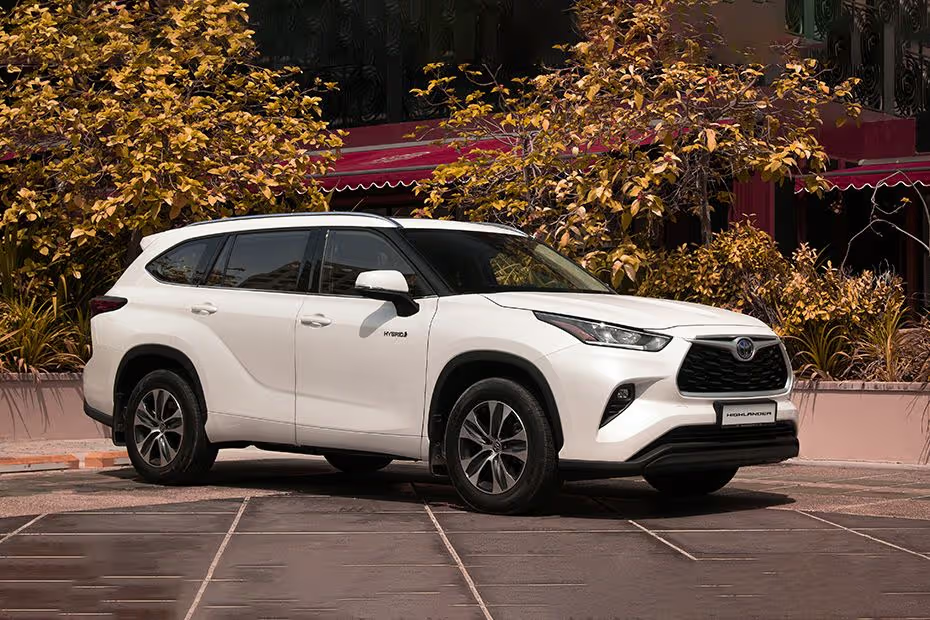
Second Generation (2008-2013)
Not quite a generation as the first generation of the Toyota Highlander was gifted with a 2008 midcycle facelift though it would ultimately serve to truly, in fact, become the completely new, all-new second generation that could be taken out for a spin up through 2013. Totally new design focusing on interior space, extremely advanced tech options and significantly stronger engine options. Now, if the 3.5-litre V6 is always going to be the takeaway, that’s sure enough-a thrust than the outgoing model offers more horsepower and torque but-for the first time-the hybrid powertrain is offered for the same car.
Things do become better with the second generation of the Toyota Highlander since there are options that seem to be bigger and easily accessible for the trim levels of this vehicle. Equipped now both as base model and sportier version, the luxurious kind is just for that general appeal. The Highlander is growing even bigger for it now comes with more seats and cargo capacity and still improves the materials inside the cabin.
Third Generation (2014-2019)
Narrow and more chiseled in body design, at last came the next generation of the Toyota Highlander that took the cause of advancement forward, and new safety features set sail in 2014. Improvement of an aggressive stance comes along with sharp lines when the design for outer look of the new Highlander was penned to paper. New interior designs and premium new interiors along with better technology incorporation and user-friendly infotainment options are inclusive from inside.
Under the skin, however, this third-generation Highlander brought a few alternative powerplants: a 2.7-liter four-cylinder and a 3.5-liter V6 – both of which were well-served by a six-speed automatic transmission. Of course, hybridised too-which made it a good option for buyers more interested in fuel economy.
However, third-generation models have gained much importance for several factors that include safety factors as well; the family of driver-assist technologies or Toyota Safety Sense applies to all grades but premium features like lane-departure warning, adaptive cruise control, and automatic high beams form part of its overall package, apart from performance and style. Fourth-generation models came with increased importance under the rating scale in matters of safety factors as well.
2020-Present
The newest 2020 is the latest of the fourth generation of the Toyota Highlander. It comes to some of the sturdiest grounds ever built by prior generations, offering better, more refined design, better fuel efficiency, vast safety features, and a more high-tech interior. Some other big upgrades that will make the 2020 Highlander standout from the rest coming from previous years are the TNGA-K platform from Toyota, common usage in other Toyota automobiles, better performance with a ride much more comfortable and less mess in the cabin.
The new fourth-generation Highlander offers two powerplants. One is the stout 295 hp from the 3.5-liter V6 unit, and the other one consists of a 2.5-liter four-cylinder paired with electric motors to churn a system output of 243 horsepower in the hybrid setup. Of course, the hybrid model would be much more value for money since it would keep much better MPG figures.
But there’s also a new, fourth-generation Highlander for families: space for up to as many eight passengers, depending on how one wants to configure the cabin and with the option of three rows of seats. Material quality shines in the cabin, instrument quality too; the 8-inch touchscreen supports Apple CarPlay, Android Auto, and Amazon Alexa.
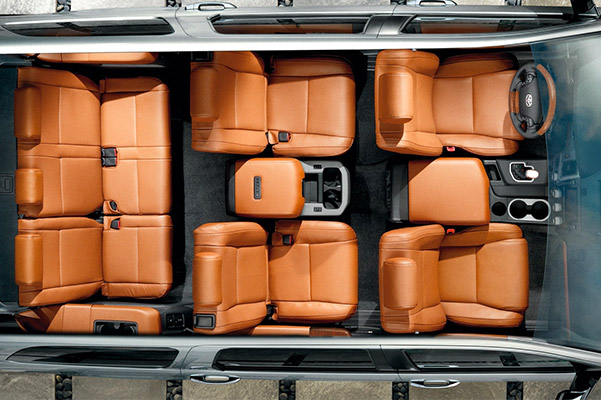
Important Features of Toyota Highlander
At the heart of defining and iconic features of Toyota Highlanders across generations is practical-one that would give a lot of sense of reliability, safety, and comfort. Let’s now have a closer look at some of the defining key features of Toyota Highlander across generations below.
- Interior Comfort and Space
This Highlander boasts itself of one of the major great interior room points. There’s much flexibility in the interior room inside and, therefore, accommodates all sorts of family unit sizes. Also, save for company, its third row seats are broad enough to accommodate adult travelers, except its other configurations. And to top this all, its second-row seats are rated spacious enough to accommodate plenty of legroom and comfort over longer trips.
The Platinum trims come at a very steep price and add more premium features like leather-wrapped cover, heated and ventilated seats, a panoramic moonroof, and even a premium sound system. In higher generations, superior soundproofing would also come with noise-damping technologies that would make for an incredibly quiet inside cabin.
- Highly Advanced Infotainment System
The new Toyota Highlander, in general, does not do too badly in the technology stakes, particularly with regards to infotainment systems. Add into that its compatibility with Apple CarPlay and Android Auto, which makes it a little easier to integrate the driver’s smartphone into his or her vehicle so that he or she can access the whole entire pack of navigation, music, messages, and much more through the touchscreen.
Along with the other new models which are the Amazon Alexa, one would be able to change the temperature by voice command and get all route information without having to draw a hand out of the steering wheel. It is a very intuitive system, aesthetic design, large touch screens in order to make human machine interaction easier.
- Option for hybrid powertrain
Perhaps, the most needed varieties of Toyota Highlander currently would be its hybrid power train. This is because customers would continue being more demanding and asking for cars that are economical in fuel and friendly to the environment. The Highlander Hybrid has proven to be a perfect model for users who want to enjoy utility without depleting their fuel economy.
So, for those who would maximize gas mileage, the Highlander Hybrid would be a great choice to make in comparison with its non-hybrid sibling. The former is rated to have as much as 36 MPG in the city and 35 on the highway, tremendous breakthroughs of the V6-powered Highlander that’s estimated to return some 21 MPG in the city and 29 on the highway. This makes the Highlander Hybrid an extremely suitable selection for most families in search of midsize SUVs, who do not need to make ecological imprints at all costs.
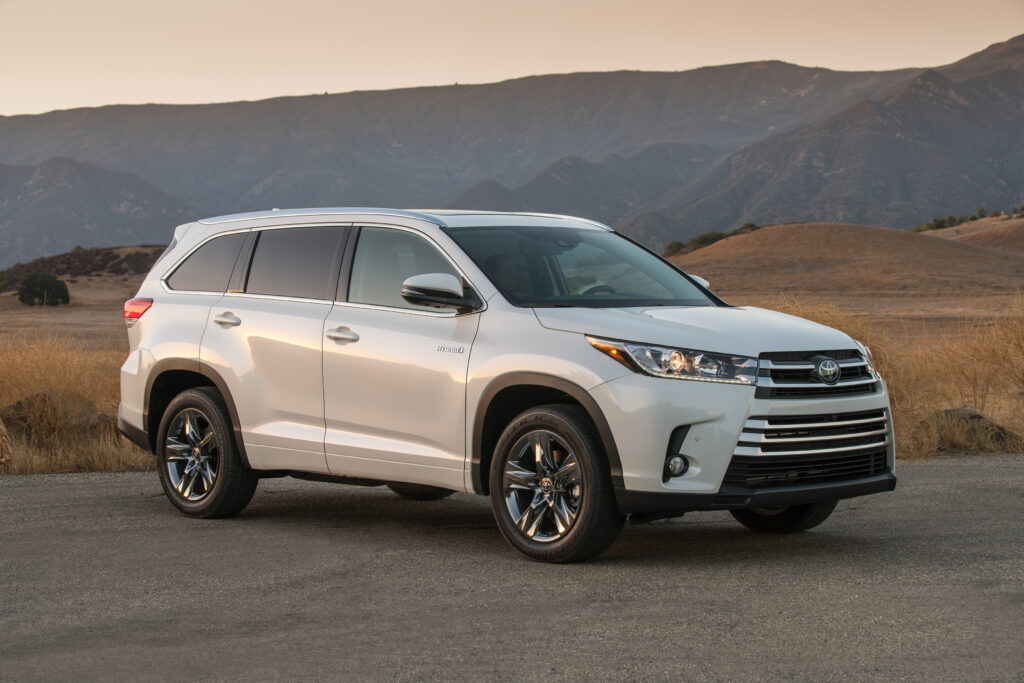
- Safety Features
Toyota Highlander has never been without a conscience on safety matters. Inclusion of this feature in the Toyota Safety Sense seems to reflect evidence enough of the company’s interest. Advanced features come as standard for most models and include:
Pre-crash System It advises the driver that a collision may occur with another vehicle or person, and can even mitigate the total effects of impact by its effect on brakes .
Lane Departure Alert If it is in its lane, without use of turn signal, the moving vehicle is crossing over its lane, the driver will be alerted.
Adaptive Cruise Control : It controls the velocity of the vehicle so that car maintains suitable distance from the lead vehicle.
Automatic High Beams-It automatically switches between the high and low beams according to which is required by the traffic situation so it lights up as much of the road as possible without dazzling other road users.
Blind Spot Monitoring-Vehicle detection while lane changing from the blind spot
These traits have see Highlander take the rank position as far as crash test by agencies like National Highway Traffic Safety Administration (NHTSA), and Insurance Institute for Highway Safety (IIHS).
5. Tow Capacity
Apparently, any individual requesting to be towed will never be frustrated by this Toyota Highlander. Equipped with a 3.5-liter V6 engine, almost all close to the nearly ability towing above 5,000 pounds if well-equipped. Therefore, hybrids can fit neatly into family circles that will need to tow their boats, trailers, or even recreational vehicles. Hybrids towing capacity is pretty low. Thus, while it has a respectable rating for fuel economy, there does not appear to be much in reserve for heavy hauls and certainly would not be one that would take the lead of the family fleet.
Performance/Drive Experience
For passengers, or for errand-runners and whatnot, that stellar, well-balanced drive in the Toyota Highlander will navigate everyday driving just as quietly as it does tougher on-road applications. That comfortable, composed ride is added to unibody construction and a TNGA-K platform, giving a ride more light-year quiet than the aged, truck-based SUVs would.
You could have a V6, too, which is pretty good punch for acceleration and highway duty. Steering of the Highlander has been set light and responsive enough to navigate tough urban centers with elan. Not made for any off-road escapades like its sibling the Toyota 4Runner, but the all-wheel-drive feature of the Highlander really gives that additional stability on slithery roads and inclement weather.
It has been pretty good in terms of mileage compared to the other vehicles of this class. Then there’s even better earth-shattering performance in terms of mileage and fuel economy if one goes in for the hybrid version.
Toyota Highlander in the Market
Of all the mid-size SUVs seeking a slice of the Honda Pilot, Ford Edge and Nissan Pathfinder, and Subaru Ascent market, reliability, safety features, and comfy interior place this vehicle at an apex.
Also, very high resale value, fair maintenance cost, the excellent reputation of reliability, and a good reputation for delivering the Highlander value that it could offer at the time with sufficient family and usage of a practical all-round vehicle will be welcomed by all time consumers .

Toyota Highlander: Aerodynamics and Design
The Toyota Highlander is one of those mid-size SUVs which passed generations. From middle-of-the-road design to sleek lines, functionality to outstanding performance, all contribute substantially to the efficiency of the Highlander, its great handling, and overall appeal. Both of them make a vehicle more acceptable in terms of performance, fuel economy, and drive experience yet keeping maintaining its splendid aesthetic appeal. We will examine the aerodynamics and designs that Toyota has focused on while coming up with the Highlander.
Aerodynamics: Performance and efficiency.
For quite a while now, one of the characteristics of contemporary automobile design is aerodynamics. This dimension of design goes with very self-evident benefits when it comes to drag reduction, fuel efficiency, and stability at even higher speeds, as applicable for the Toyota Highlander and any other car in the market today.
One of the first obvious visual features of Highlander’s aerodynamics is how sleekly its lines cut into the air. The designers of Toyota intended to strike a low, even roof line; the purpose was to reduce resistance in the air: in other words, this vehicle would slice through the air better. This indeed makes for lesser drag, which likely helps mileage cruise around on highways.
The front of the Highlander has been molded to so that the airflow flows around the vehicle and also helped create less drag. The grilles, the placement of headlight, bumpers are all sculpted in order to present no resistance due to air that could go over the vehicle. This in turn presents smooth air flow around the vehicle which reduces the turbulent air that may slow down the vehicle or impede fuel efficiency. Active grille shutters add another aerodynamic element for the airflow and efficiency in an engine.
The rear of the Highlander is also amongst those features that were taken into consideration on the aerodynamics of the car. Some drag would naturally be induced by the rear spoiler and tailgate in its design. It is, however, taken seriously since the overall stability of the car is enhanced by it. Good rear design is that which allows air to pass over the vehicle smoothly with minimum possibility of lift or stability during high-velocity driving on highways or crosswinds.
Another key feature of aerodynamics that is featured on the Highlander includes underbody panels. Such panels receive a smooth finish which aids in pushing the air down under the vehicle. The smooth flow of air neither helps increase drag nor will it disturb the balance of the vehicle. By smoothing out the air flow under the car, Toyota ensured that performance improved on the Toyota Highlander in addition to the fuel efficiency.
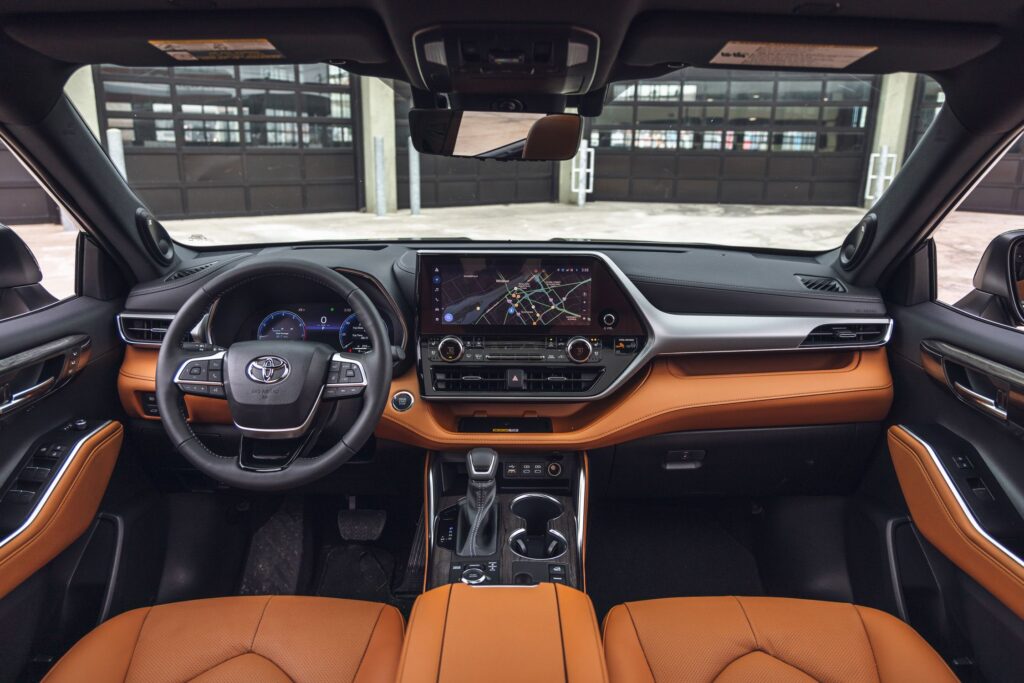
Design: Aesthetics and Form in Equilibrium
While aerodynamics is the core point of performance and efficiency for the Toyota Highlander, design comes as an important partner in order to demonstrate the overall appeal. The house at Toyota aimed for a modern sleek and functional design which could address the needs of today’s consumer but still remain with some visual strength that the Highlander drives on the road.
Sharp and angular headlights on the front grille characterize more streamlined and sophisticated, in terms of design, fourth-generation 2020 models of the Toyota Highlander while sculpting the body to give an impression of modern dynamism. Lines characterizing this vehicle, based on Toyota design philosophy, have been drawn too slim to enhance better aerodynamics while still giving the vehicle a feel of elegance.
Inside, comfort and convenience are at the top roles in Toyota Highlander’s design. It boasts class leading material quality as passenger space inside. Intuitive control of the seating occupants comes with a comprehensive space for cargo. The advanced technology encompasses connection options including large touchscreens and climate control which really integrate very seamlessly inside the center console within an aesthetically pleasing layout.
The interior design also forms the basis of the overall driving experience. Soft-touch materials and thoughtful ergonomics ensure comfort inside the vehicle, be it a short drive or long haul. The seating layout combined with ample legroom and headroom by the car marks the Highlander as a class leader for family travel and comfort.
Toyota Highlander integrates aerodynamics and design to bring out an efficient yet attractive vehicle. These aerodynamic parts of the structure within this SUV have resulted in improved fuel economy, a reduction in drag, and stability at higher speeds in this ride and have gone a long way in helping to style, comfort, and function of this ride. All these lead to the creation of all elements that culminate into an especially versatile as well as a great SUV that attracts those consumers who are seeking performance and aesthetics in their daily drives. With Highlander a sleek aerodynamic outline and design enhancement Toyota signifies singular focus on engineering excellence and commitment towards delivering a rounded driving experience.
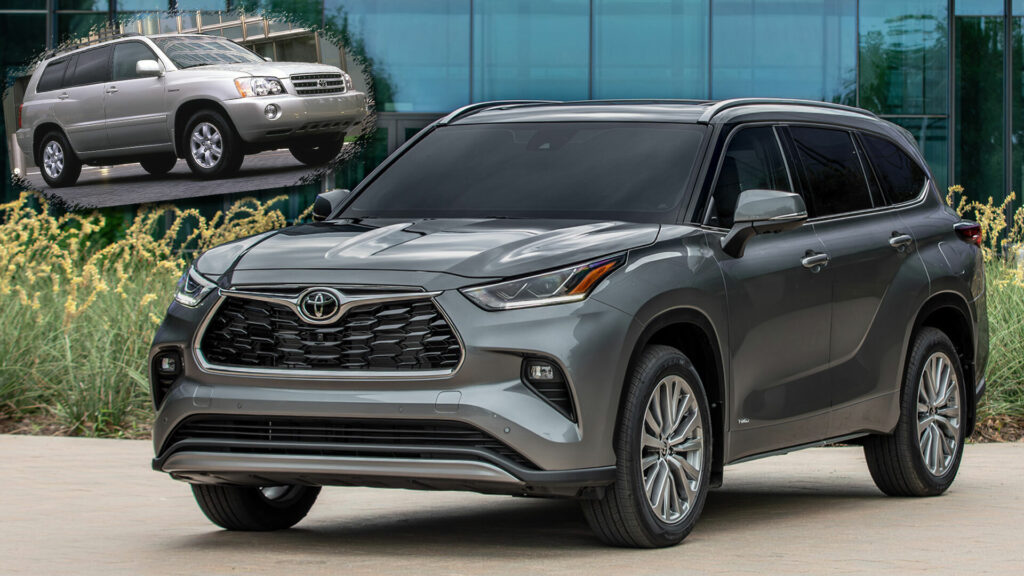
Conclusion OF Toyota Highlander
It is how the Toyota Highlander punched a hole in a hole in the structure of one of the best, well-rounded and reliable SUVs that have come out on this modern market. As it was launched for the first time in 2001, the generation of the current Highlander ended up being an extremely efficient and technologically advanced family-friendly vehicle to meet the demands of a large category of consumers.
With the peppy V6 to the fuel-sipping hybrid powertrain, with opulent advanced safety features to available V6 muscle, the Highlander offers up a much better, less easily beaten package. Roomy interiors, dependable performance, and a strong suite of safety features make the Toyota Highlander an excellent choice in almost everyone’s search for a midsize SUV.